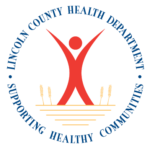Notifiable Conditions
Certain diseases are designated as notifiable conditions as they are considered a threat to the general health of the community. These conditions are often highly contagious, have a high mortality rate, are new (or novel), or have otherwise been designated by the CDC and Washington Department of Health as posing a public health threat. Health care providers and medical labs are required to report these conditions to the state and local health departments per the WAC 246-01.
Notification of these conditions is the responsibility of the provider and/or lab when there is a confirmed diagnosis. The specific disease will determine what counts as a “confirmed” diagnosis. When the report is made and the person lives in Lincoln County, LCHD is notified of the diagnosis. We are then required to conduct an investigation into the diagnosis to determine where the disease originates. We do this to help protect the community from the disease and lower the risk of it spreading.
When we are notified about one of these conditions being present in the county, we often begin by calling the person who was diagnosed. We work with them to not only find out more, but make sure they are connected to appropriate treatment of the illness and to any available supports they may need. All information collected during this investigation—from the initial notification to the call to all other steps we must take—are confidential and protected by HIPPA. The LCHD Privacy Policy is available for those who wish to read it.
If you’ve received a call from us, it is important to return the call. We are here to help you—from connecting you to resources for treatment, to ensuring no one else becomes infected, to helping with notifications of others if needed. Our priority for these conditions is to help you get well while protecting others from contracting it.
For questions or concerns about a notifiable condition, please reach out to Gabrielle Chain via phone or email.
Notifiable Conditions
Gabrielle Chain
509.215.1031
